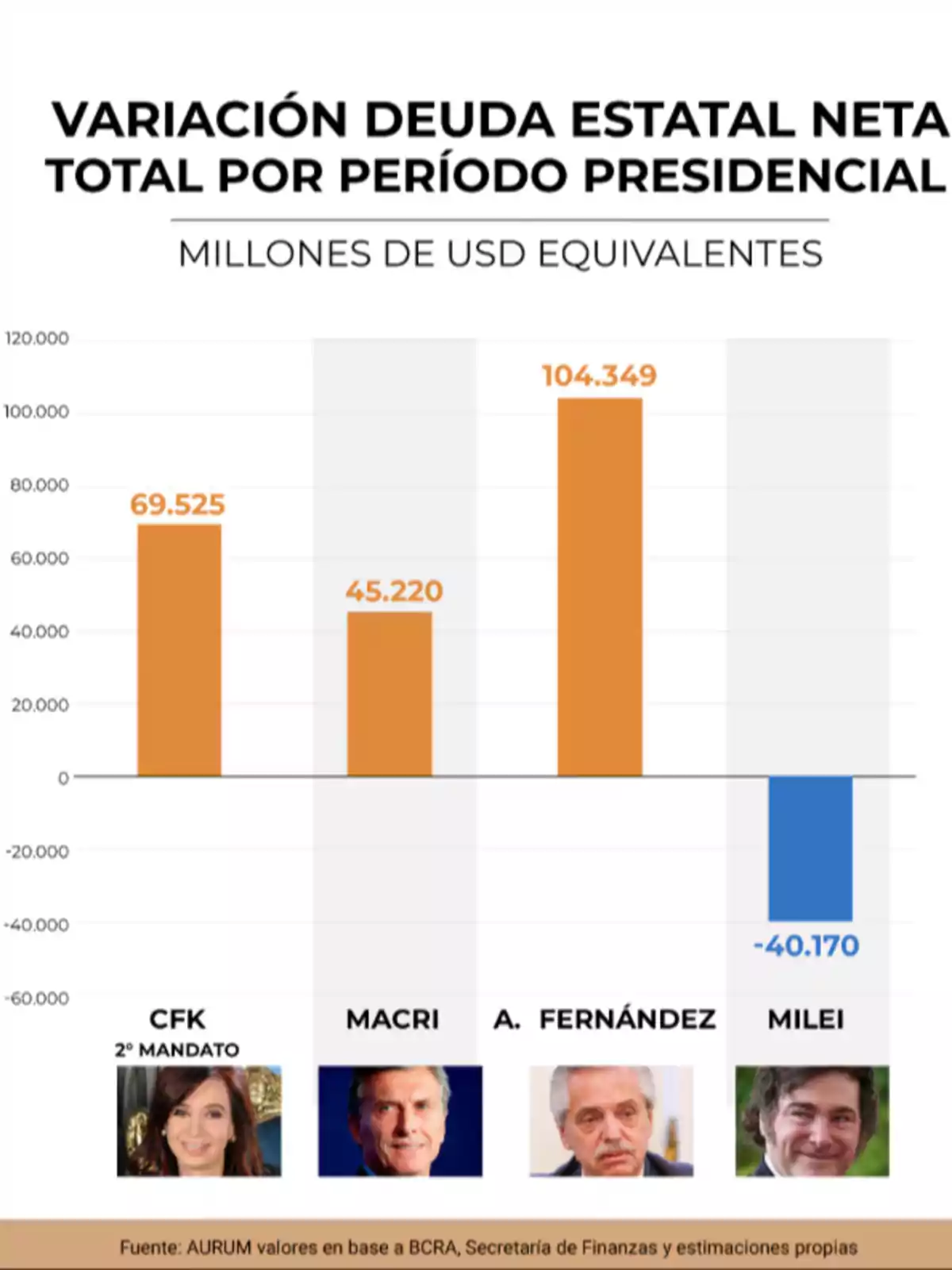
Thanks to Milei's government, the net state debt was reduced by USD 40.17 billion
Argentina's net state debt decreases for the first time in over a decade thanks to the libertarian administration
In the first 18 months of Javier Milei's administration, Argentina's "net state debt" was reduced by USD 40.170 billion, according to a recent study on the national government's debt over the last administrations.
This result of the Milei administration is explained by a decrease in net debt in pesos equivalent to USD 47.498 billion, partially offset by an increase in foreign currency debt of USD 7.328 billion.
The evolution of this public sector indicator, which includes the obligations of the Treasury and the Central Bank, and also considers the assets of both entities, offers a more accurate view than the traditional notions of "public debt" or "external debt."
Under Milei's administration, there was a sharp drop in net state indebtedness in 2024, mainly thanks to the unwinding of the Central Bank's interest-bearing liabilities.

The figures, prepared by Pablo Repetto, head of research at ALyC Aurum, authorized by the National Securities Commission (CNV), may be striking, but they follow the same methodology used by the consulting firm of Gabriel Rubinstein, former Deputy Minister of Economy during Sergio Massa's administration, to calculate this indicator in the last 16 months of Alberto Fernández's government.
This approach, which accounts for assets and liabilities of the national government, contrasts with the more common political narrative of Kirchnerism. It considers debt both in local currency and in foreign currency, with international organizations and with local or external creditors, in addition to recording the variation of assets such as Central Bank reserves. These elements are usually excluded from the Kirchnerist narrative, which focuses almost exclusively on foreign currency debt, especially that contracted with the IMF.

Milei's administration and previous governments
In fact, the data show that, between December 2011, the beginning of the second term of the corrupt former president Cristina Kirchner, and June of this year, the largest increase in "net state debt" correplied to the Kirchnerist government of Alberto Fernández (USD 104.349 billion), followed by CFK's second term (USD 69.525 billion) and Mauricio Macri (USD 45.220 billion). The current libertarian administration is the only one since 2011 that shows a reduction in this indicator compared to the moment it took office.
According to Pablo Repetto, when analyzing the data since 2011, Javier Milei's period stands out from previous administrations by recording a decrease in the level of indebtedness.
"It is very good news, then, that in nominal terms the Argentine state, for the first time in a long time, has reduced the level of debt with the private sector," he stated.
More posts: